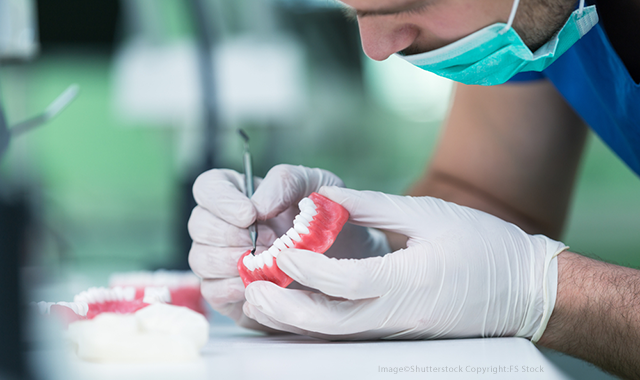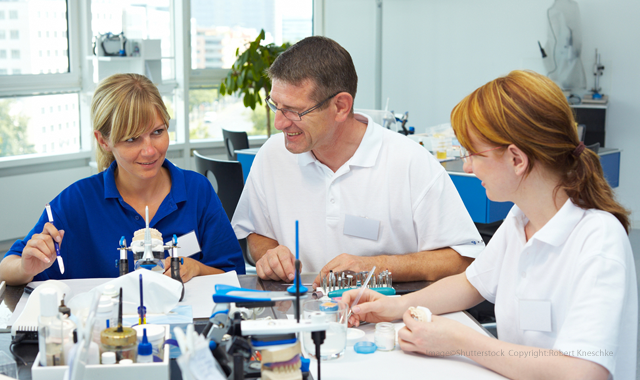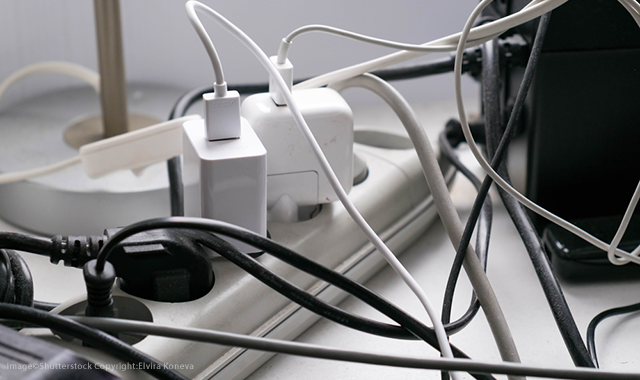5 surefire ways to get an OSHA inspection in your dental lab
Want to avoid a visit from OSHA at your lab? Here's what you need to know.
While a lot of attention is paid to dental offices when it comes to infection control, dental laboratories also are subject to strict standards which they must adhere to. While some OSHA violations are obvious, others involve small details that can be easy for lab technicians to overlook.
Lab owners play a crucial role in setting an example for their workers when it comes to following safety policies.

“Dental lab owners must be committed to providing a safe workplace and follow their own safety policies,” says Mary A. Borg-Bartlett, president of SafeLink Consulting, a provider of OSHA and FDA compliance services. “For instance, if safety eyewear is required in production areas, then the owner and managers must also wear safety eyewear. It’s unreasonable to expect the general employee population to adhere to safety policies if top management doesn’t set the example.”
Trending article: The 5 craziest denture tips on the internet
An OSHA violation can not only have a negative impact on a lab’s reputation but also its bottom line. As of Jan. 2, 2018, OSHA penalty amounts are $12,934 per violation for a serious, other-than-serious, or posting requirements violation. A willful or repeated violation will cost lab owners $129,336 per violation.
Despite lab owners’ best efforts, complaints may still be reported to OSHA. That’s why it’s critical to stay up to date on best practices and to frequently evaluate processes and systems within the lab environment.
Click through the slides to find out how to avoid an OSHA inspection.


1. Wearing incorrect eye protection
There are many chemicals and hazardous materials used within the lab, and as such, proper eye protection must be used to minimize the risk of injuries.
Borg-Bartlett says that as a first step, employers should assess their workplace for hazards and then implement controls to either minimize or eliminate those hazards. If it’s not possible to fully protect workers, then personal protective equipment, including eye protection, must be required.
More from the author: The state of dental technology in 2018
“In a dental lab there are exposures to many different types of hazards that would require the use of eye protection,” she says. “Some of those hazards are the splash of a chemical or biological hazard, flying debris creating during grinding, or a laser or casting hazard,” she says.
The type of eyewear used is also important. While regular prescription eyewear is often worn by lab technicians, Borg-Bartlett points out that if the eyewear isn’t rated by an agency such as the American National Standards Institute (ANSI), then it won’t meet OSHA’s requirements.



2. Improperly training staff
In order to adhere to OSHA standards, lab technicians and staff members must have an understanding of the various rules and procedures in place. Borg-Bartlett recommends that new employees be trained upon hire and prior to entering areas with recognized hazards.
“This usually includes Hazard Communication training on chemical exposures, Bloodborne Pathogen Standard training on biological hazards, emergency action plans, personal protective equipment requirements, which can include respiratory protection, use of guards and shields on machinery and equipment, and lockout/tagout if de-energizing of equipment during repairs and maintenance is performed by workers,” she explains.
Related reading: The benefits of proper OSHA and infection control training
If there’s a risk of occupational exposure to bloodborne pathogens, then OSHA mandates training occur upon hire, annually and when there are changes in the standards, says Karen Daw of Karen Daw Consulting and former clinic health and safety director for The Ohio State University College of Dentistry.
“A good employer will make sure their team receives the information they need to be safe and will conduct assessments that demonstrate understanding of the educational content,” Daw says. “They will also provide an ‘open-door’ policy so that employees know they can report unsafe practices and can suggest safety improvement measures.”
According to Daw, complacency is one of the biggest mistakes lab owners make when it comes to following OSHA standards.
“I’ve been fortunate enough to assist dental labs that recognized, though they felt they were in good shape, they wanted third-party verification,” she says. “Many things can turn up when you partner with someone whose job it is to find discrepancies. There are so many resources available to assist business owners with identifying what OSHA standards apply and how to meet them.”



3. Non-compliance with the Hazard Communication Standard
OSHA’s Hazard Communication Standard is sometimes called the “employee right-to-know” standard. It requires all employees have access to hazard information, including Safety Data Sheets for hazardous chemicals.
“Employees must review the SDS for the chemicals that they work with so that they are familiar with any hazards associated with the chemical and how to protect themselves from the hazard,” Borg-Bartlett says.
Labeling is another aspect of the standard.
Trending article: 8 dental implant tips you need to know
“When chemicals are removed from the original container that has the appropriate warnings from the manufacturer, then the secondary container must be labeled with the same warnings,” Borg-Bartlett explains.
Lab technicians come into contact with a variety of chemicals and materials from flammables to carcinogens. As such, Daw says that dental lab workers must be familiar with the SDSs for all chemicals they’re exposed to.
“One of the biggest mistakes I’ve observed in the lab is that people are not sure of the proper way to use, store and handle chemicals and are not wearing (or wearing properly) appropriate personal protective equipment, are not familiar with cleanup and containment procedures in the event of a chemical spill, or are not being mindful of the hazards in general associated with a particular product,” Daw says.
The storage of chemicals, especially acids, corrosives and flammable materials, also presents a hazard in the dental lab.
“Acids must be handled carefully and stored for disposal according to the state’s hazardous waste laws,” Borg-Bartlett says. “Flammables should be stored away from heat sources. The quantities of these chemicals within the dental lab will determine whether or not specific corrosive or flammable cabinets are required.”



4. Using faulty electrical wiring
Electric wiring is an aspect that may often be overlooked, but it still plays an important role in the dental lab. In particular, temporary wiring and splicing, such as flexible cords and cables, should be inspected and paid attention to by lab owners.
“The employer must ensure that extension cords, for instance, are only used for temporary purposes. Multi-plug adapters should not be used since they could overload a circuit and cause a fire,” Borg-Bartlett says.
More from the author: The risks and rewards of mail-order braces
OSHA’s Electrical Standards address electrical safety requirements to safeguard employees. According to OSHA, the standards apply to electrical equipment and wiring in hazardous locations. For instance, OSHA notes that if lab workers use flammable gases, they may need special wiring and equipment installation.
In addition to being familiar with the Electrical Standards, OSHA recommends consulting with the lab’s insurance company or local fire department.



5. Failing to have a Respiratory Protection Program
Being exposed to hazardous chemicals and materials means also being at risk of inhaling particles and fumes from those materials. According to Borg-Bartlett, Respiratory Protection Programs are designed to protect workers from inhalation of these dangerous fumes.
“When respirators are required to be worn by certain employees, then the employer must have a written Respiratory Protection Program,” she says. “This program includes having the employee complete a medical questionnaire that is submitted to a healthcare professional for review to determine if the employee is medically able to wear a respirator.”
Related article: 10 major infection control risks
The program also must include fit testing to ensure the proper fit of the respirator, Borg-Bartlett says. The fit testing must be performed each year.
Borg-Bartlett adds that one of the most recently recognized chemicals causing harmful exposures in dental labs is crystalline silica. Silica is commonly found in lab products like porcelain, pumice and stone. Due to this, OSHA introduced a new Respirable Silica Standard that went into effect for all dental labs on June 23, 2018.
“OSHA has lowered the Permissible Exposure Level (PEL) for silica by cutting it in half,” she explains. “Under this standard, employers must perform air sampling to determine if administrative controls and engineering controls, such as dust collection, are adequate to protect employees.”
